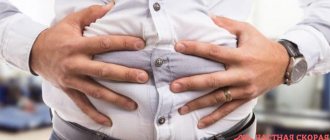If in this article you want to find the exact answer to the question “To drink or not to drink?”, then most likely this will not happen. But for those who lead an active lifestyle and want to expand their knowledge about the body and the safety of the training process in particular, the article will be useful.
The main component of alcoholic beverages, which has various effects on the body, is ethyl alcohol or ethanol.
Once it enters the body, its metabolism becomes a priority for the entire system. Unlike carbohydrates, fats and proteins, our body does not have a “depot” where ethanol can be stored, so it must be digested.
Under the influence of enzymes, ethanol is converted into acetaldehyde, which is essentially poison. Accumulating in the body, it causes redness of the face, headache, nausea, vomiting; accelerates the heartbeat and causes a number of other rather unpleasant sensations.
Research: harm and benefit
Various classifications are used around the world to determine relatively safe doses of alcohol: in the USA, one serving is equal to 360 ml of beer (5%), 150 ml of wine (12%), 45 ml of strong alcohol (40% - gin, whiskey, etc. ).
The Dietary Guidelines for the United States recommend drinking no more than one serving of alcohol per day (if at all) for women and one to two for men.
| It is separately noted that consuming one serving of alcohol per day during the week is not equivalent to seven servings drunk on Saturday. |
The studies that form the basis of these recommendations examined the following :
- mortality rate, including from cardiovascular diseases;
- percentage of development of coronary heart disease, angina pectoris and non-fatal myocardial infarction;
- levels of white blood cells and inflammatory markers;
- lipid levels and blood viscosity;
- blood pressure, etc.
Previously, there were popular studies showing that alcohol or certain drinks can benefit the body. Recently, more conflicting data has emerged.
The Lancet published the results of a large-scale study on the effects of alcohol on health, conducted in 195 countries over sixteen years. The main conclusion: there are no safe levels of alcohol consumption; global recommendations need to be revised. Health risks increase with the volume of alcohol consumed.
However, in the graphs of the study results, you can see that the health risks are small when drinking 100 g of pure ethanol per week or 10 g per day.
There are hundreds of factors influencing the risk of disease. Which ones to purposefully manage depends on your conscious choice. And the more new data appears, the more informed you can make decisions, including about alcohol consumption.
Is it possible to drink wine after training?
Those who like to drink dry red wine after training should know that muscle growth does not occur in the gym during exercise, but during periods of rest. It is then that the muscle tissue is saturated with the substances entering the body and grows. Well, or it decreases if alcohol is given to her instead of proteins.
For several hours after completing the workout, the process of assimilation of incoming substances accelerates many times over. For example, an hour of training speeds up your metabolism for at least two more hours after finishing your workout.
Therefore, if you drink wine immediately after training, the absorption of alcohol into the blood and its transport to the muscles will occur very quickly. As a result, instead of progress, we get muscle destruction with ethanol. How significant the damage will be depends directly on the amount you drink.
The only option to minimize harm to the results of exercise is to drink a little, up to 100 g, white wine a day after training, provided that you are not planning to go to the gym the next day. Drinking wine on the day of training, or in the evening before the training day, in any case leads to regression of performance.
Alcohol and training process
When planning loads, it is necessary to take into account alcohol consumption for a number of reasons that can affect both the training process as a whole and the quality of a particular workout.
We invite you to familiarize yourself with 7 reasons that will help you make an informed choice.
Impact on emotional state and behavior
Alcohol consumption is associated with changes in a person's psychological state and behavior. For example, people in a state of intoxication are characterized by excessive bravado, a distorted perception of the real level of risk, and aggressive behavior. The relaxing effect of alcohol is reflected by impaired coordination and balance, and slower reactions.
All this can certainly lead to injury, especially in team sports. According to O'Brien's research, football players are the most injured due to intoxication.
Dehydration
Each gram of ethanol consumed increases urine synthesis by 10 ml. Physical activity involves the release of large amounts of fluid through sweat. When these two factors are combined, the removal of water from the body occurs at an incredible rate, which guarantees severe dehydration.
The body needs water to maintain blood flow, which transports oxygen and micronutrients to the muscles. The effectiveness of training in the event of a “supply interruption” is greatly reduced, since the muscles will feel the lack of oxygen earlier than during training in a normal state.
Prolonged oxygen deficiency provokes increased lactate formation after exercise. Its increased concentration in the muscle can lead to the destruction of muscle fiber, whereas the goal of training is to strengthen the muscles. In addition, too much lactic acid can lead to muscle fatigue and cramps. It is worth noting that this process occurs in all muscles of the body, including the heart.
| Besides the fact that such training will most likely be unpleasant psychologically, from the point of view of the result it will be practically useless. |
Change in natural thermoregulation
Changes in thermoregulation are also a consequence of alcohol consumption. Experiments have shown that alcohol consumption in conditions above and below neutrally perceived temperatures worsens the body's adaptation to these temperatures and makes associated stress less effective.
This is especially obvious at low temperatures. If the dose of alcohol is small and the ambient temperature does not cause stress in the body, then thermoregulation remains virtually unchanged. However, with a significant decrease in environmental temperature and large doses of alcohol, the vessels dilate, heat transfer increases, and body temperature decreases.
Along with a drop in blood glucose levels during exercise, the process becomes even more pronounced. There is a risk of hypothermia, which can contribute to the occurrence of inflammatory processes in the body.
| In such a situation, the body will direct most of its internal resources to maintaining normal body temperature, rather than to obtaining the effect of physical activity. |
Depletion of the body's energy reserves
We have long known that the food we consume is converted into energy. We need energy to function.
Stored fat is one of the sources of energy, but to use it you need oxygen. The process of converting fats into energy takes time, which means there must be other, more accessible reserves. This reserve is glycogen, which stores glucose.
| Glycogen reserves are small and therefore need constant replenishment. But even low doses of alcohol increase the time it takes to restore these energy reserves. |
An athlete’s diet plays an important role in recovery: high-carbohydrate nutrition helps to quickly replenish glycogen reserves. However, as experience shows, consuming alcohol in large quantities makes it difficult to adhere to a diet , and in athletes leading such a lifestyle, the diet is most often disrupted, which ultimately results in a lack of energy.
Excessive strain on the heart
Physical activity during a hangover is highly discouraged: the function of the cardiovascular system is impaired, which is reflected in an increased heart rate, cardiac arrhythmia, decreased left ventricular function and increased blood pressure.
| High-intensity training in this state will harm the cardiovascular system. |
Violation of the recovery process
It's intuitively clear why you should avoid drinking alcohol before exercise, but it's not so obvious why you should avoid it after exercise.
As you know, recovery is an important part of the training process. During the deep phase of sleep, processes are activated that are responsible, among other things, for muscle growth.
| Alcohol can cause sleep disturbances, and therefore disruption of the recovery process. Thus, alcohol can indirectly reduce muscle growth and slow down progress in the training process. |
| Alcohol consumed in large quantities can reduce protein production after exercise. This means that the muscles will not show the expected growth. |
There are currently no qualitative studies on this issue for small doses of alcohol. It is assumed that if you stick to moderate doses, there will be no significant reverse effect.
Slowing down the weight loss process
Alcohol itself is a very high-calorie product: each gram of 96% ethanol contains 7 kcal . In addition, many alcoholic drinks contain large amounts of sugar and other additives. This means that, along with alcohol, a person consumes a lot of “empty” calories, which do not saturate, but only create additional work for the body to remove ethanol breakdown products.
With excessive alcohol consumption, metabolism is disrupted, a person’s own feelings deceive him: the quantity and quality of food consumed during intoxication and during the recovery period differs from the usual diet .
| Due to the above factors, chaotic consumption of alcohol in large quantities is accompanied by a gain in fat mass. |
Is it possible to exercise after a glass of wine?
In this case, it is advisable to answer the question of whether it is really necessary to drink wine before going to the gym. Statements that, for example, white wine or homemade wine will not cause harm are completely devoid of logic. The main substance that affects the body in any type of wine is ethanol. And besides harming the muscles, it has no other effect.
Alcohol impairs motor coordination and muscle efficiency. Therefore, under moderate loads, training after a glass of wine will be significantly less effective, and when working with significant weights, it will pose a health hazard.
Thus, we can conclude that wine before and after training inevitably harms the body. It is impossible to combine completely different things. If you want to spend time in an entertainment establishment, go ahead, but you won’t be able to combine wine and sports.
Brief recommendations for combination
A conservative approach suggests that if you are training, you should not drink alcohol two days before and two days after training. However, since we want to avoid the influence of the above factors on our body, it becomes clear that the quantity and quality of the drink consumed can change this period to a lesser extent - there is no universal recommendation in this matter .
For example, if you feel that the intensity of the workout is such that recovery will not take much time, then you can reduce the period to one day.
| If you consume large amounts of ethanol and have a severe hangover, it is better to refrain from training for the recommended two days. |
Alcohol before training
Nobody forbids drinking, of course. Alcohol is sometimes used in professional sports, such as shooting, to reduce hand tremors and increase accuracy. They also say that beer helps you recover after running. But this is all debatable.
The only drink compatible with sports is water!
In fact, alcohol and sports are incompatible things. By skipping a bottle of beer in the evening, an athlete reduces the effectiveness of training tomorrow. And desperate fatalists drink before training.
Considering the negative impact of strong drinks on the human body, we ourselves do not drink and we do not advise you to.
Exercising while intoxicated is dangerous to your health.
CONCLUSION
We do not encourage you to give up alcohol completely, but we remind you that a system that has been overloaded for a long time may at some point fail. Plan your training process rationally, connecting to this process not only dry facts, but also common sense, as well as your feelings.
Author: Anna Polyushko, employee of the #Sekta scientific department, physics specialist
References: 1. Shirreffs S, Maughan R, The Effect of Alcohol on Athletic Performance, Current Sports Medicine Reports 2006, 5: 192-196. 2. Irish Nutrition + Dietetic Institute, Factsheet, The Truth about Alcohol and Exercise. 3. Harvard T.H. Chan, School of Public Health, The Nutrition Source, Alcohol: Balancing Risks and Benefits. 4. Manthou E. et al., Role of exercise in the treatment of alcohol use disorders, Biomedical Reports, Vol.4, Is. 5, May, 2021. 5. El-Sayed et al., Interaction between alcohol and exercise: physiological and hematological implications, Sports Medicine, 2005, 35:257-269. 6. Leasure L. et al., Exercise and Alcohol Consumption: What We Know, What We Need To Know, and Why it is Important, Frontiers in Psychiatry, 2015. 7. The 2015-2020 Dietary Guidelines for Americans, Appendix 9. Alcohol. 8. Robert A. Kloner et al., To Drink or Not to Drink? That Is the Question, 2007, 1306-1317, Circulation, American Heart Association.
The effect of alcohol on muscles
So let's start with what alcohol is.
Alcohol (ethyl alcohol) is a substance that has a depressant effect on the central nervous system (the effect is similar to an anesthetic). Also, alcohol has a pronounced disinfecting (antiseptic) effect.
I think it would not be amiss to repeat that the systematic consumption of alcohol internally (in the form of alcohol) leads to addiction and the development of a chronic disease - alcoholism.
For a very long time, ethyl alcohol was used as an anesthetic during surgical operations; even amputations of limbs were carried out under the influence of alcohol.
And all this is quite interesting, but you and I are wondering how alcohol actually affects muscles. Is it really that dangerous for an athlete working out his muscles in the gym?
I must say quite unequivocally, ALL THE STUDIES that caught my eye all said one thing: ALCOHOL IN ANY DOSAGE AND IN ANY ITS FORM HAS A NEGATIVE INFLUENCE ON MUSCLE GROWTH , as well as on strength indicators in bodybuilding.
In order to somehow visualize the destructive process of alcohol on muscles, let me give a few examples:
- If you drank alcohol once to the point of being “slightly tipsy” and slightly intoxicated, then in terms of its effect on the body this will be compared to skipping one workout.
- If you are completely drunk, i.e. to a state of pronounced alcoholic intoxication, this will reduce your strength indicators, and full recovery may take 1-2 weeks.
- Frequent consumption of alcohol, even a little (0.5 liters of beer every other day) slows down your progress in the gym (this happens in 85% of athletes) and reduces muscle growth in absolutely everyone.
I would like to say additionally about protein synthesis in muscles while drinking alcohol.
Protein synthesis is the process of combining amino acids (the building blocks of which protein molecules are made) in a certain sequence.
Ethyl alcohol inhibits muscle protein synthesis by about 20% if you drink in moderation due to the release of the catabolic hormone cortisol (the “stress hormone”).
One study of 8 healthy men was diagnosed after drinking a large dose of alcohol (approximately 1.75 g/kg body weight). A significant decrease in testosterone levels and an increase in cortisol levels were found within 24 hours after drinking alcohol in the test men.
If you have been tormented by the question of how alcohol affects muscles, then the answer is definitely negative.










